“Plug-in hybrid/electric vehicles (xEV) contain a high-voltage battery subsystem, which can be charged with a built-in on-board charger (OBC) or an external charging pile. Charging (application) requires high voltage, high current and high performance in a high temperature environment. The development of a charging pile with high energy efficiency, high performance and rich protection functions is essential to achieve a longer range with the shortest possible charging time. . Commonly used semiconductor devices are IGBT, super junction MOSFET and silicon carbide (SiC).ON Semiconductor provides complete system solutions for electric vehicle OBC and DC charging piles, including super junction MOSFETs, IGBTs, and gates that have passed AEC vehicle regulations.
“
Plug-in hybrid/electric vehicles (xEV) contain a high-voltage battery subsystem, which can be charged with a built-in on-board charger (OBC) or an external charging pile. Charging (application) requires high voltage, high current and high performance in a high temperature environment. The development of a charging pile with high energy efficiency, high performance and rich protection functions is essential to achieve a longer range with the shortest possible charging time. . Commonly used semiconductor devices are IGBT, super junction MOSFET and silicon carbide (SiC). ON Semiconductor provides complete system solutions for electric vehicle OBC and DC charging piles, including super junction MOSFETs, IGBTs, gate drivers, silicon carbide (SiC) devices, voltage detection, control products and even power modules that have passed AEC vehicle regulations. , Support designers to optimize performance and speed up the development cycle. This article will mainly introduce super-junction MOSFETs and cost-effective IGBT solutions for DC charging piles for electric vehicles.
Electric vehicle charging level and mileage
Charging piles are classified according to their charging capabilities to handle different use case scenarios. The first-level charging pile is an AC charging pile with 120 V and output of 15 A or 20 A, which increases the mileage by about 4 to 6 miles per hour of charging. The secondary charging power has four power levels of 3.3 kW, 6.6 kW, 9.6 kW, and 19.2 kW, which are suitable for 240 V AC power sockets with output currents of 20 A, 20 A, 50 A, and 100 A. The input voltage of the DC Fast Charging (DCFC) pile is 440 V or 480 V, which can be charged to about 80% within 30 minutes, and is used for public charging piles. According to China’s “One Vehicle, One Pile” plan, the total number of electric vehicle charging piles will reach 4.8 million in 2020, and at least 2 million of the 4.5 million total installations of electric vehicle charging projects will be high-power DC charging piles, and After 2020, other countries will also add charging piles for electric vehicles. ON Semiconductor mainly provides DCFC solutions.
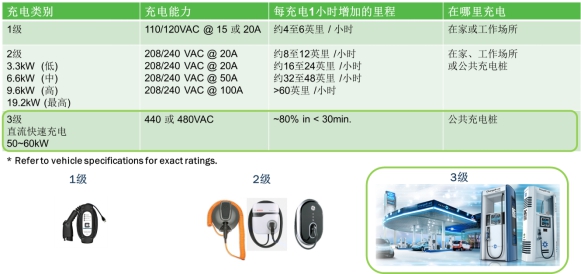
Figure 1: Electric vehicle charging level and mileage
The trend of electric vehicle charging pile power module system
1. Increase output power to save charging time
Charging piles will be developed from the current mainstream 60 kW and 90 kW to the future 150 kW and 240 kW. Accordingly, the charging pile power modules will be increased from the current 15 kW, 20 kW, and 30 kW to the future 40 kW, 50 kW, and 60 kW. , In order to shorten the time to fully charge.
2. Increase power density to save space
This can be achieved by increasing the switching frequency Fsw to reduce passive components and reducing losses to reduce heat sinks.
3. Improve energy efficiency to save energy
ON Semiconductor is positioned to increase the full-load energy efficiency from the current 95% to more than 96%, surpassing energy efficiency regulations.
4. Improve system reliability
This requires prolonging the service life of electrolytic capacitors and ensuring high reliability for outdoor installation in dusty, humid, hot, and cold areas.
Advantages and usage trends of super junction MOSFET
Energy-saving and emission-reduction trends such as shifting to zero-emission electric vehicles have boosted the demand for medium and high-voltage MOSFETs. The on-resistance Rds(on) and loss of the planar MOSFET are relatively large. And according to the breakdown voltage is proportional to the area, to obtain a higher breakdown voltage requires a larger area of doping. Super-junction MOSFET can significantly reduce the on-resistance Rds(on) and gate charge Qg. Due to the charge balance of the super-junction MOSFET, under the same doping, the area is twice, so the breakdown voltage is also twice, and the breakdown voltage and the on-resistance are approximately linear, thereby significantly reducing the conduction loss and switching loss. Due to the high energy efficiency and power density of super-junction MOSFETs in fast switching applications, they are often used in high-end applications.
Electric vehicle charging pile architecture and ON Semiconductor’s third-generation super-junction MOSFET solution
For example, a 210 kW electric vehicle charging point is composed of 14 15 kW modules, and each 15 kW battery charger module is input by a 3-phase AC 380 V. After a 3-phase Vienna power factor correction (PFC), the voltage increases To 800 V DC voltage, and then output 250 V to 750 V DC voltage through the high-voltage DC-DC.
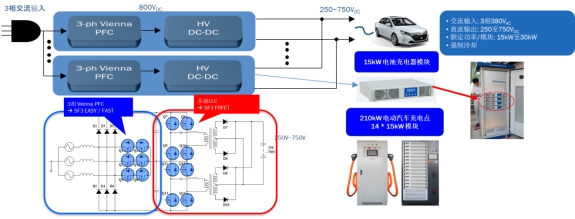
Figure 2: Electric vehicle charging pile architecture
Among them, the 3-phase Vienna PFC can choose the EASY Drive/FAST series of ON Semiconductor’s third-generation super junction MOSFET (SUPERFET III), and the multi-stage LLC can choose the SUPERFET III fast recovery (FRFET) series. The EASY Drive series can internally adjust the gate resistance Rg and parasitic capacitance, have extremely low EMI and voltage spikes, and are suitable for hard/soft switching. The FAST series has reduced gate charge Qg and output capacitor stored energy Eoss, low switching loss, high energy efficiency, and is suitable for hard switching topologies. The FRFET series integrates a highly optimized fast recovery diode with ultra-low Qrr and Trr, minimizes switching losses and improves system-level reliability, and is suitable for soft/hard switching topologies.
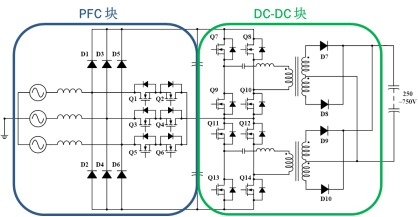
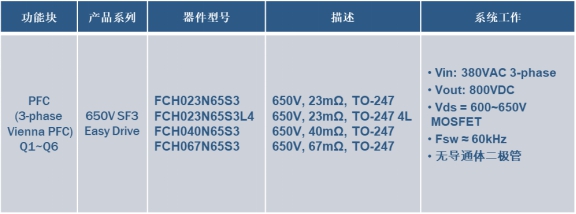
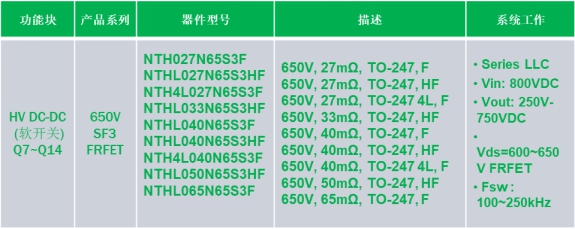
Figure 3: Recommended ON Semiconductor SUPERFET III solution for electric vehicle charging piles
SUPERFET III FRFET series has ultra-low Qrr and Trr
Comparing the SUPERFET III FRFET series and Easy Drive series of ON Semiconductor under the same working conditions, it is measured that the FRFET series are 90% and 73% lower than the Qrr and Irr of the Easy Drive series, respectively.
ON Semiconductor’s SUPERFET III FRFET outperforms its competitors
Under the same working conditions, the measured gate charge Qg, Trr, Irr, Qrr and Eoss of ON Semiconductor’s SUPERFET III FRFET are reduced to varying degrees compared with competitors, ranging from 8% to 47%, and It has lower on-resistance Rds(on), turn-off loss and best-in-class diode performance, thus providing higher system energy efficiency.
Use SUPERFET III FRFET to avoid output short circuit fault
Ordinary MOSFETs are prone to output short-circuit faults in LLC topology, while ON Semiconductor’s SUPERFET III FRFET can avoid output short-circuit faults by optimizing parameters such as gate charge Qg, and make the device work normally.
Use the HF version of the SUPERFET III FRFET to improve system energy efficiency
The F version of ON Semiconductor’s SUPERFET III FRFET is a slow switch when it is turned off, so it has low peak Vds and low dv/dt. The advantage is better EMI performance. The HF version is fast switching when it is turned off, so it has lower switching loss and lower Ross, which can provide higher system energy efficiency.
Cost-effective IGBT solution for electric vehicle charging piles
Compared with the super junction solution, IGBT can provide a cost-effective solution for electric vehicle charging piles. ON Semiconductor provides industry-leading field-stop IGBT technology. Its latest fourth-generation field-stop (FS4) IGBT has the lowest conduction loss, turn-on loss, turn-off loss, body diode loss and smaller voltage spikes in its class. The recommended FS4 IGBT and rectifier solutions for electric vehicle charging piles are shown in the table below.
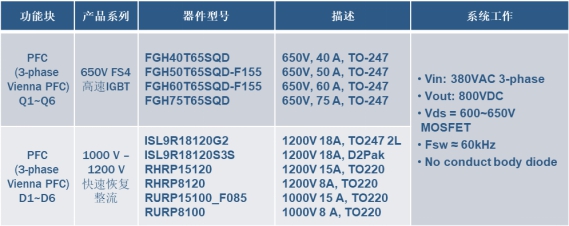

Figure 4: Cost-effective IGBT and rectifier solutions for electric vehicle charging piles
SiC and Intelligent Power Module (IPM)
In addition, ON Semiconductor also provides 650 V and 1200 V SiC diodes, 1200 V SiC MOSFETs, and compact IPMs to achieve higher energy efficiency, power density and reliability.
Summarize
With its expertise in power devices and packaging technology, ON Semiconductor provides high-efficiency and innovative semiconductor solutions for electric vehicle charging applications, including best-in-class super-junction MOSFETs, cost-effective IGBT and diode solutions, SiC-based solutions and IPM helps to achieve higher performance, energy efficiency and lower loss. It is an excellent choice for power modules such as DC-DC and PFC for electric vehicle charging piles.
The Links: NL2432HC22-45A LQ10D311

0 Comments for “Best-in-class super-junction MOSFET and cost-effective IGBT for electric vehicle charging piles”